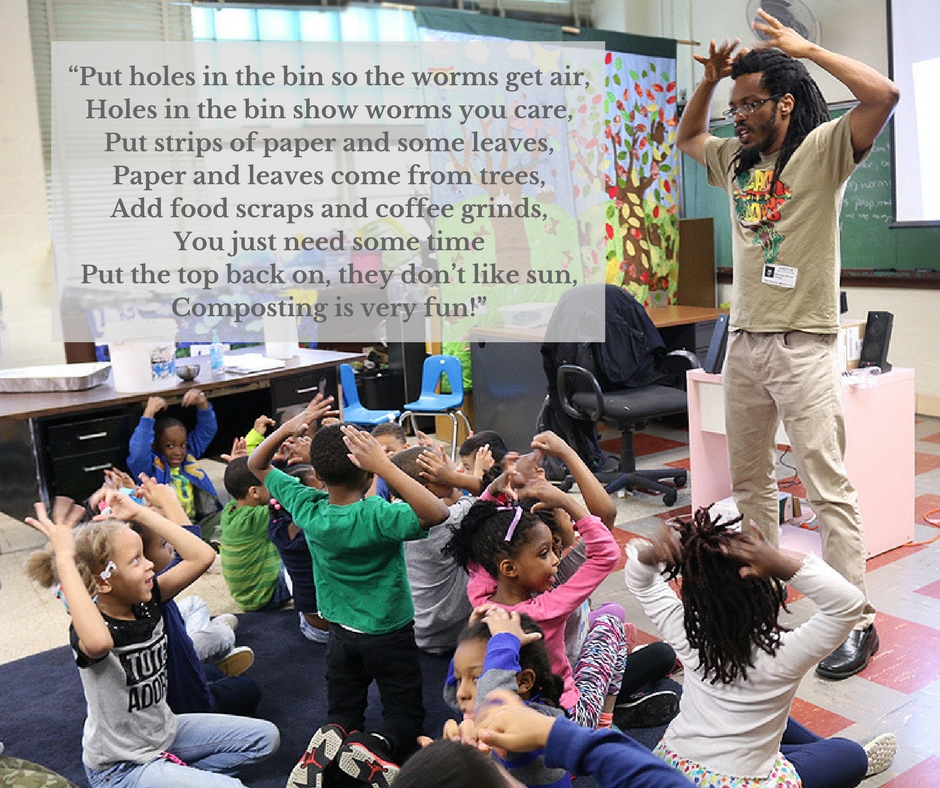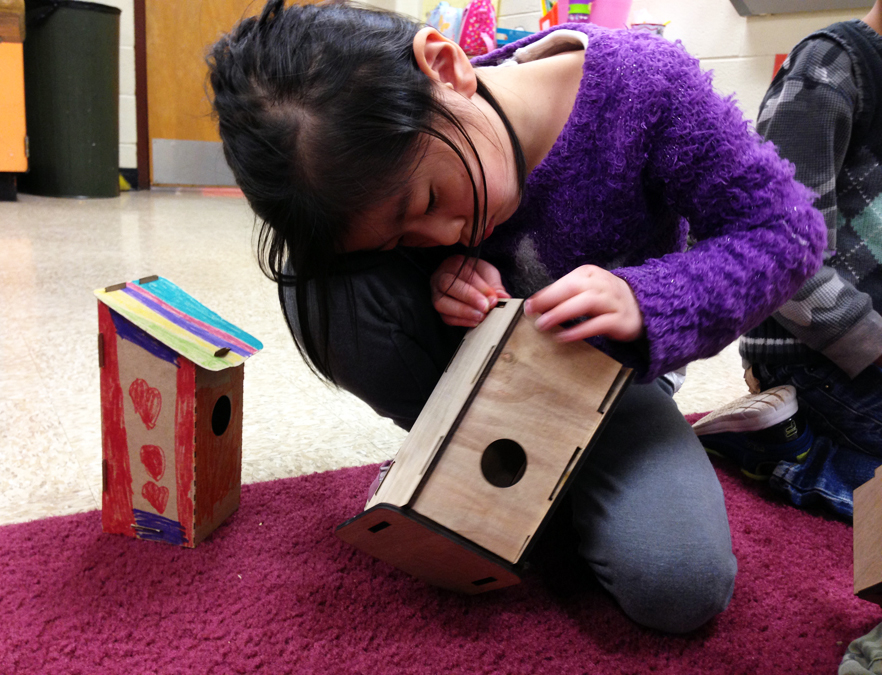Blog

Sowing a Big Idea: Growing Up Green
Some big ideas are meant to be shared. It is through partnership and collaboration that the big ideas grow roots and become an integral part of something even bigger. In 2015, Pat Cruz, YA’s then-chief innovation officer, and educator Mary Kate Bransford had a dream. What if every kindergarten classroom in Prince Georges County Public Schools (PGCPS) had an arts-integrated environmental literacy program?
Their big idea brought together twenty teachers and five teaching artists to write a five-day lesson plan that both met environmental literacy and visual art criteria and explored themes like habitat restoration, local ecosystems, the life cycle of plants, and the lifecycle of animals for a brand new program: Growing Up Green. The program, a partnership between Young Audiences and the Prince Georges County Office of Environmental Literacy, would be piloted in 17 schools in the district in the 2015-16 school year.

That first year resulted in the creation of five separate 5-day arts-integrated environmental literacy lessons. Teaching artists worked side by side with kindergarten teachers all five days of the program with the goal of handing off that role to each individual school’s art teacher in future years. To prepare teachers, Kristina Berdan, Young Audiences Education Director, trained teacher ambassadors, kindergarten lead teachers, and art/music teachers to use the arts as a teaching tool in their classrooms. “I used to think art was a product of a lesson,” said one kindergarten teacher in Prince George’s County Public Schools after being trained in arts integration through Growing Up Green. “Now I think art is the process to achieve the objective.”
The team constantly listened, assessed, reflected, and revised, resulting in a comprehensive catalog of resources for teachers and the refinement of, in the second year, four unique residencies instead of the initial five, and then in its third year, one: Fiber artist Pam Negrin‘s The Lifecycle of Plants. Kindergarteners and their teachers explored nature with their real-life senses—looking, smelling, touching—to not just learn about our natural world, but experience it. Classrooms across the district were outfitted with custom-made embroidery tables where students could gather and stitch their observations, building with and learning from one another. “We think with our hands and when students are immersed in a lesson together, they begin to make their own connections,” said Pam. From sharing what they learned during the school day at home to internalizing and remembering more information, the effects on learning were so profound that once-resistant teachers embraced learning through arts integration and extended it into other content areas.

Growing Up Green combines the arts and time outdoors with making connections between humans and the environment and brainstorming solutions. “The program gets kids outside and thinking about the bigger picture and the combination of all the elements of the program supports the district’s goals,” said James Roberson, PGCPS Instructional Specialist for Environmental Literacy. And after the lessons have ended, classes are left with beautiful embroidered tapestries they can share with the school community. “The tapestries are a great way to showcase what they’ve learned.”
Our state was the first in the nation to approve an environmental graduation requirement for all Maryland students. In 2011, the school board created Environmental Literacy Standards that would support the growth of the planet’s next generation of stewards. Prince George’s County Public Schools is intentionally integrating these standards into the PreK-12 curriculum, and through Growing Up Green, they are successfully reaching the county’s youngest students. This is the first year that PGCPS is running Growing Up Green without Young Audiences’ support. “Young Audiences has been an outstanding partner over the last four years,” said Roberson.

“I’m really impressed by how different teachers have taken what they learned and run with it,” said Jhanna Levin, PGCPS Environmental Literacy Outreach Teacher. As a result of Growing Up Green, teachers in the district’s Autism Program, for instance, have embraced the art of embroidery, the fine motor skills it develops, and the calm it inspires. “It soothes the kids in a way they weren’t expecting.” Levin, new to the department, has taken the reigns of Growing Up Green and nurtured the development of teachers new to the program as well as veteran educators. She is constantly checking in and helping the teachers to do what works best for them.
She is holding a training session this coming January for lead kindergarten teachers to explore additional arts integration techniques for classrooms and it’s not just new teachers who are looking forward to it. “We’re talking about turning T-shirts into yarn and using dance for the observational piece,” said Levin. James Roberson added, “We’re really excited about what Jhanna brings to the program.”
Growing Up Green was a tiny seed that with research and tremendous effort and love, Young Audiences was able to sow. Through the amazing partnership we’ve had with PGCPS, we’ve seen the program evolve and take shape in a way that both works best for the district and stays true to the vision of Growing Up Green at its conception. We are extremely proud to see the district take charge and continue nurturing and developing this incredible program. Levin said, “There are teachers who have done this for three years now and they say, ‘Just give us the materials. We’ve got this.'”








